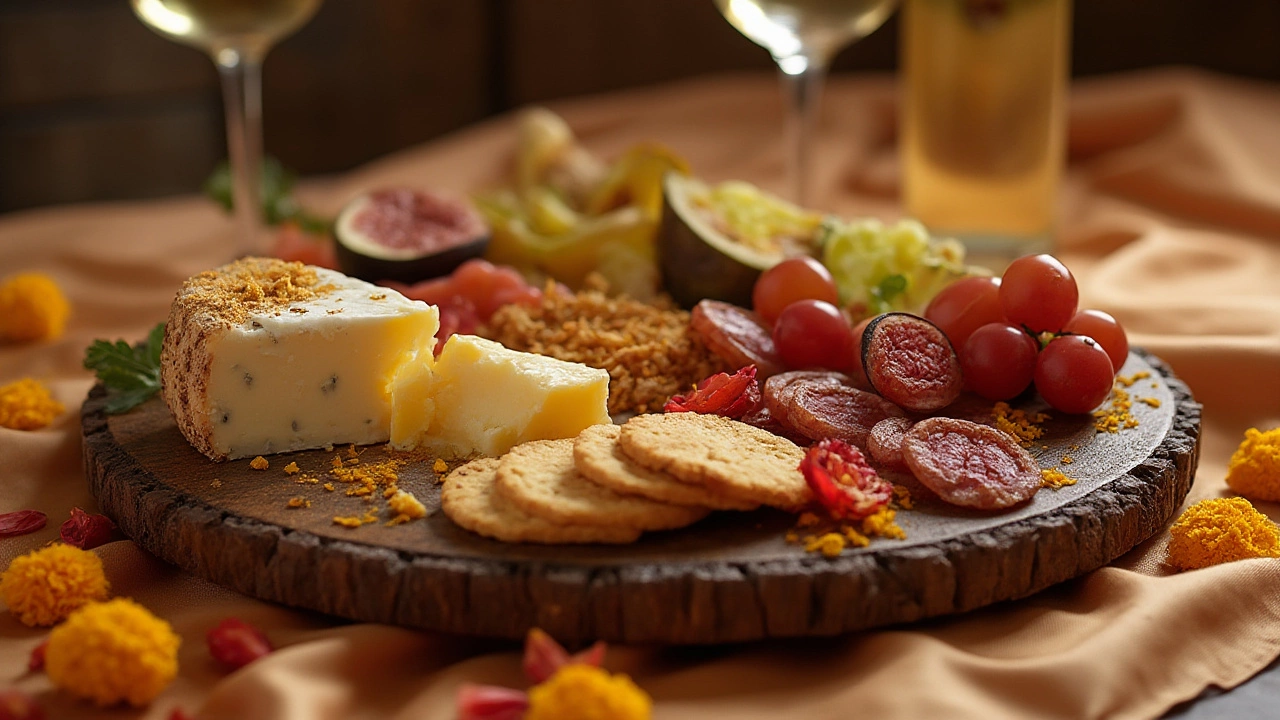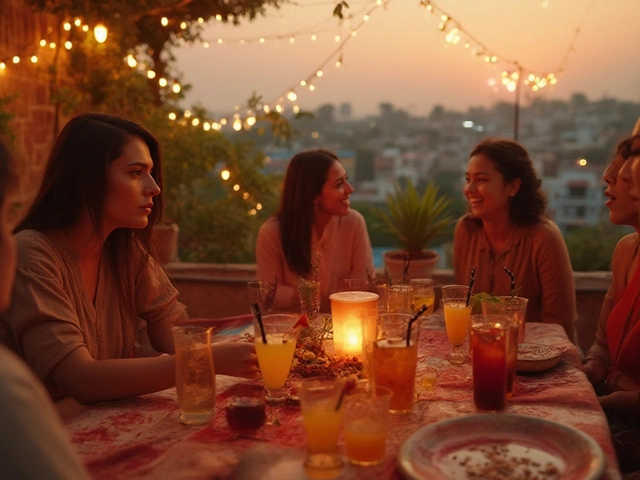
There’s something a bit magical about a table topped with wine, cheese, and a spread of nibbles—a little moment of luxury that says, "let’s slow down and savor this." You’ve probably seen beautiful boards in restaurants or at parties: slices of brie next to dark chocolate, juicy grapes, curls of prosciutto, those crackers you wish you could sneak into your purse. But what do you actually call that irresistible mix of cheese, wine, and tempting extras? There’s a proper term, a little history, and a ton of ways to make this part of your next get-together way more interesting (and less intimidating). Time to spill the secrets of the wine and cheese platter.
What’s in a Name? Understanding the Wine and Cheese Platter
Let’s clear something up: if you’re simply serving cheese with some wine, the classic term is "cheese board" or "cheese platter." But when you add cured meats, nuts, fruits, and those fancy pickles? That’s when you enter the realm of the "charcuterie board." Charcuterie (pronounced "shar-KOO-tuh-ree") isn’t just a word thrown around by foodies—it’s rooted in the French tradition of preparing and assembling cured meats. The word itself dates all the way back to the 15th century: "chair" means flesh and "cuit" means cooked. But cheese lovers have co-opted the board, and now "charcuterie board" is the catch-all label for any arrangement of meats, cheeses, crackers, fruits, and spreads, often accompanied by wine.
Let’s look at a quick table breaking down the names you might hear around your next gathering:
| Name | What’s on it? | Perfect for |
|---|---|---|
| Cheese Board/Platter | Cheeses, maybe some crackers, and a little fruit | Cheese lovers, appetizers |
| Charcuterie Board | Cheeses, cured meats, nuts, olives, fruit, spreads | Events, wine night, sharing |
| Antipasto Platter | Cheese, meat (like salami), marinated veggies | Italian-style dinners |
| Wine and Cheese Platter | Cheeses artfully paired with specific wines | Wine tastings, dinner parties |
Today, most people just say "charcuterie board," even if the meat takes a back seat to the cheese. Pinterest and Instagram are packed with creative takes—don’t feel boxed in by tradition.
But the roots of these boards stretch deep into culinary history. French charcutiers were serious about curing and combining flavors, and their influence exploded across European wine culture. Fast forward to the 1970s, when home parties and grazing platters became trendy in the US, and by the 2010s, suddenly, beautifully styled boards became a social media sensation. Last year, Google's Year in Search for 2024 revealed that "charcuterie board" was among the most searched food terms—proof we still can't get enough of pairing wine and cheese.
The real magic is in the pairing—the way a sharp cheddar changes when you sip a cabernet, or how blue cheese wakes up with a drizzle of honey and a glass of sweet Riesling. Knowing the right words and understanding their background sets you up for more than just a snack; you become the board’s maestro, blending flavors, textures, and stories.

Building the Perfect Platter: Ingredients, Pairings & Pro Tips
A board is only as good as what you put on it—and how you bring those elements together. Start with variety. Think about texture: soft, hard, creamy, crumbly. Aim for at least three cheeses on your platter: maybe a buttery brie, a sharp cheddar, and a tangy goat cheese. If you’re going all out, add something daring like blue cheese or an aged gouda for extra personality.
Now, let’s talk numbers. A standard party board for six to eight people might use:
- Three to five types of cheese (about 100-150g / 3-5oz of each)
- Two to three cured meats (like prosciutto, salami, coppa)
- A handful of crunchy extras (nuts, seeds)
- Seasonal fruit (grapes, figs, apple slices, dried apricots)
- A couple of spreads—think honey, fig jam, or chutney
- Pickled items for zip (cornichons, olives, pickled onions)
- Plenty of crackers or rustic bread slices
Here’s a helpful tip: arrange everything by color and shape, not just function. Mix soft cheeses next to crunchy nuts or thinly sliced apple—contrasts make things more fun. Give each cheese enough room to show off. If you’re including meats, twist them into ribbons or fold them into flowers for that wow factor you’ve seen in viral food videos.
Next, match your cheeses to the right wine and cheese platter options. Here’s a quick cheat sheet to get you started:
| Cheese | Best Wine Pairing |
|---|---|
| Brie | Champagne, Chardonnay |
| Sharp Cheddar | Cabernet Sauvignon, Malbec |
| Goat Cheese | Sauvignon Blanc, Pinot Grigio |
| Blue Cheese | Port, Riesling, Sauternes |
| Manchego | Rioja, Cava |
Don’t stress about perfect pairings. Try a few combinations and see what hits the spot for you and your guests. Wine pairing is as much about personal taste as it is tradition. But as a general rule, softer cheeses like brie pair with sparkling or white wines, hard cheeses go well with structured reds, and funky cheeses need sweetness to balance them out.
What sets a great board apart is the thoughtful extras. Spreads like honey, stone-ground mustard, or spicy chutney let you build new flavor combos with each bite. Don’t skimp on those pickled veggies or salty nuts—they cut the richness and keep guests coming back for more. A handful of fresh herbs or edible flowers can add serious visual appeal.
If you want to impress (and who doesn’t?), label your cheeses and create a little menu card. Guests love discovering what they’re tasting, and everyone learns something new.
Worried about budget? You don’t need to raid a fancy cheese shop. Mix pricier cheeses with everyday ones from your local supermarket, and let fresh fruit or crusty bread bulk up the board. Just arrange things with care, cut cheese in interesting shapes, and you’ll have the look of luxury minus the price tag.

Serving, Storing, and Savoring: How to Make It Memorable
The board is built—the only thing left is serving (and eating!). Cheese tastes best when it’s served at room temperature, so take it out of the fridge 30 to 60 minutes before your guests arrive. This lets the flavors develop fully. If your cheese feels a bit too soft or runny when you unwrap it, don’t panic—it’s supposed to relax as it warms up.
Use a big wooden board, marble slab, or even a baking tray as your base. No need for anything fancy—presentation is all about layout and pops of color. Lay a few small knives on the board (one for each cheese style, if possible) and offer toothpicks or forks for picking up sticky stuff. Let each person build their own bite-sized discovery.
Here are a few tricks seasoned hosts swear by:
- If you’re unsure about portion sizes, expect about 60-90g (2-3oz) of cheese per person if served as an appetizer, or double that for a meal-style board.
- For reds that need to breathe, open bottles 15-30 minutes before serving.
- Dark chocolates, spiced nuts, and dried cherries offer surprising, crowd-pleasing pairings—don’t be afraid to experiment off-script.
- Add a couple of non-alcoholic drink choices like sparkling water with fresh citrus in case not everyone at your table drinks wine.
- If your board includes blue cheese or very soft cheese, serve those at the far end to keep the aromas distinct from milder cheeses.
Leftover cheese will keep for up to a week if tightly wrapped, but skip freezing it—texture and flavor both suffer. Bread and crackers are best stored separately in airtight containers if you hope for a second round the next day.
One last point: the platter isn’t just about the food, but the experience of sharing. There’s no rush, no right or wrong way to eat. Some people start with the mildest cheese, working up to blue; others just build their dream bite straight off the board. Don’t police the process, let everyone discover what works for them. A bottle or two, a table of friends, and a stunning display of cheeses—that’s really what a wine and cheese platter (or charcuterie board, if you want to be fancy) is all about. It’s the joy of discovery and good company in easy reach.





Categories